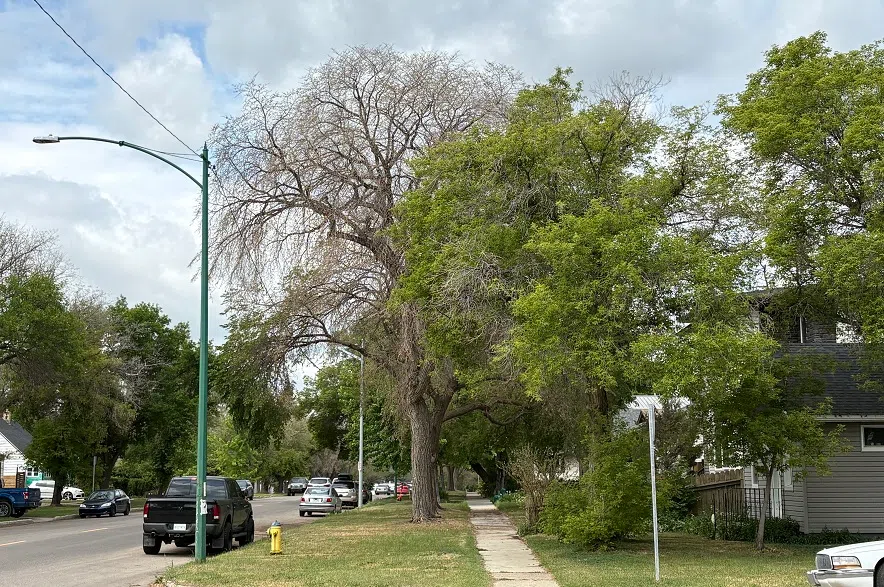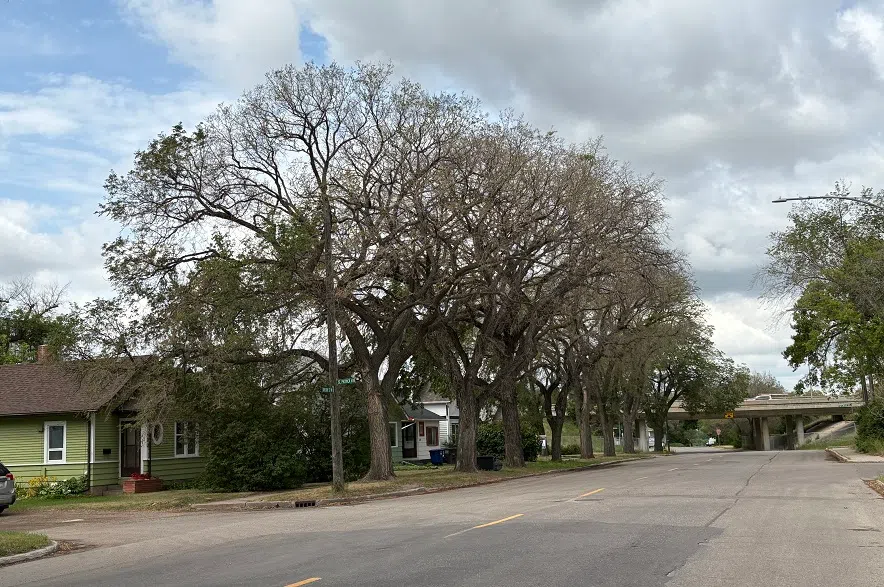Some trees in Saskatoon are looking a little worse for wear due to the cankerworms that have been running rampant throughout the city this spring.
Cate Francis, the City of Saskatoon’s superintendent of urban forestry, said while the trees may appear to be dead, they are not.
Read More:
- Construction begins on Dundonald Ave. Solar Farm in Saskatoon
- Regina father among victims of deadly Air India crash
- City of Regina planning to spray more than 4,500 trees for cankerworms
“They are still alive. It’s kind of amazing; trees have adapted to deal with outbreaks of these kinds of pests,” she said.
“(The trees) can put out a second flush of leaves after the initial defoliation.”
It takes a tree around three weeks for a tree to produce its second set of leaves after the defoliation is complete, but Francis said it isn’t something people should be concerned about when it comes to the health of the trees.
“It’s not really a major concern. It doesn’t really have a major impact on the health of the tree,” she said. “(The cankerworms) make things kind of ugly for a few weeks in the spring.”

Cate Francis, the City of Saskatoon’s superintendent of urban forestry, said while the trees may appear to be dead, they are not. (Will Mandzuk/650CKOM)
“The caterpillars are feeding on the leaves – that’s part of their life cycle,” she said. “Eventually they’ll drop off the tree and pupate in the ground.”
Cankerworms have been a problem in the city this year, and Francis said the population of them has remained high for quite awhile.
“It’s been a couple years of it peaking, and we expect that it will go down,” she said. “We can’t say exactly when, but these things do come in cycles.”
Francis said both spring and fall cankerworms are feeding on the city’s trees, as both types are active in the spring.
Some simple steps can help the trees recover a bit more quickly, Francis added.
“Watering will be a lot of help,” she said. “We are also in a drought cycle in Saskatchewan, so any water that your trees can get will go a long way to helping them recover.”
Francis said it’s hard to judge exactly how much of the city is affected by the cankerworms.
“It’s kind of spotty. You go through and you can see it showing up in different areas,” she explained. “We don’t have a percentage; we don’t track that, and it does change from year to year.”
Some areas in the city that have been affected include Taylor Street and the Mount Royal Neighbourhood.
Last month, the city shared some tips on how residents can help prevent cankerworms from affecting their trees.
Typically, cankerworms are controlled using tree bands that are wrapped around the tree, and the best time to place the bands is from September to May.
The city noted that it does not have a program to control cankerworms or leafrollers because they typically do not impact the health of the trees.











